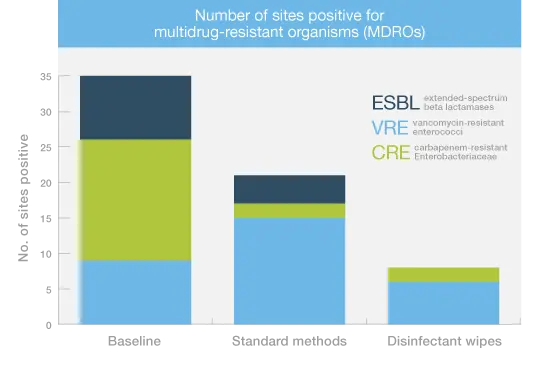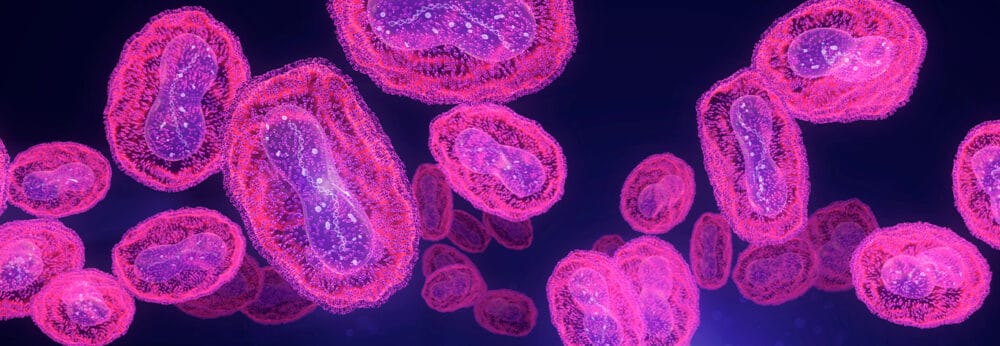Posted
25th May 2018
Research
There are few well-controlled studies investigating the impact of disinfectant wipes in a clinical setting compared with standard methods. A study from a group of researchers in Cardiff shows that one-step cleaning and disinfectant wipes are more effective than two-step detergent and chlorine solution cleaning / disinfection in removing microbial contamination from hospital surfaces.
What was the method?
The double cross-over study was performed on two wards with an identical layout in Cardiff, Wales. The wards received either standard cleaning / disinfection (two-step detergent cleaning followed by chlorine solution disinfection) or disinfectant wipes (one-step cleaning and disinfectant wipes that produce peracetic acid and hydrogen peroxide when activated by water). The methods were allocated to sequential 3-months blocks so that each ward crossed over between the two cleaning / disinfection approaches, along with a baseline period and washout periods. A training programme for all staff involved with cleaning was delivered before both the standing cleaning / disinfection and disinfectant wipe phases. Weekly samples were collected from 11 surfaces over the course of the study, and ATP was used to measure surface cleanliness.
RELATED RESEARCH: The impact of Clinell Universal on reducing SARS-CoV-2 contamination in England’s hospitals
The value of training
The introduction of training alone improved the efficacy of standard cleaning and disinfection, resulting in a reduction in colony counts, ATP score, and the presence of indicator organisms. The introduction of wipes demonstrated an incremental benefit over training and standard methods, resulting in a significant reduction in total aerobic count, total anaerobic count, and ATP score compared with baseline; the overall reduction in aerobic count was significantly greater for wipes compared with detergent and chlorine solution. Furthermore, the reintroduction of standard cleaning and disinfection was associated with the counts increasing significantly on many of the items.
The incremental benefit of wipes over training and standard methods is best illustrated by trends in indicator organisms (see Figure). Here, the number of indicator organisms decreased as a result of training and standard methods, but decreased following the implementation of disinfectant wipes. The reduction of antibiotic-resistant Gram-negative bacteria (including ESBLs and CRE) was the most marked.
Reduces risk in the clinical setting
This paper illustrates both the value of training to improve the standards of conventional cleaning and disinfection, and the incremental value of introducing disinfectant wipes. The disinfectant wipes provided a one-step cleaning and disinfection process that was easier and more effective that a two-step cleaning then disinfection process involving detergent and chorine solution. Although the study was not designed to evaluate any clinical outcomes, the reduction in microbial contamination associated with the introduction of disinfectant wipes, especially contamination with multidrug-resistant Gram-negative bacteria, reduces risk in the clinical setting.

If you’d like to find out more about our all-in-one cleaning and disinfectant wipes, visit our Clinell Universal Wipes page. Help spread the word about infection prevention by sharing this article on social.
SHARE THIS ARTICLE
Tags
Latest News
Celebrating 20 Years of GAMA Healthcare: Our Story
This month, GAMA Healthcare celebrates 20 years of helping prevent…
Norovirus: Understanding its transmission and prevention in the UK
Introduction Norovirus is recognised as the leading cause of viral gastroenteritis…
Clean Between to Reduce Healthcare-Associated Infections
Healthcare-associated infections (HAIs) are a significant concern for healthcare facilities…
Mpox: emergence of a new threat
A new threat related to mpox is emerging, in the…




